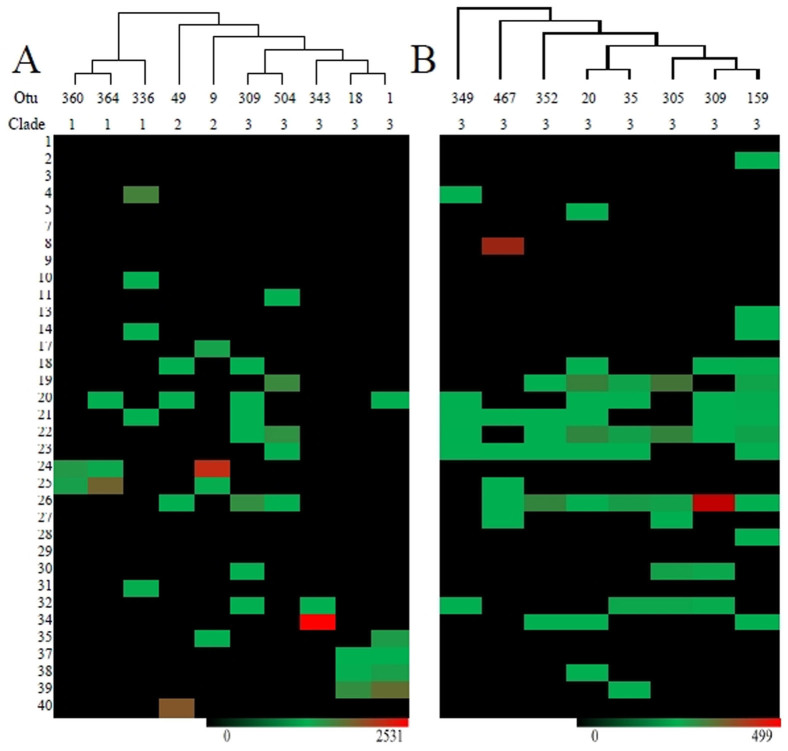Figure 5. Heatmap visualisation of the most dominant TM7 OTUs identified along with their proposed clade affiliation (A) the most highly abundant phylotypes and (B) the most widely distributed phylotypes observed.
Each gradient key displays the highest number of total reads obtained for each group of phylotypes with many OTUs present in relatively high abundance for one sample only (red/brown). The most widely distributed phylotypes all clustered with subdivision 3 sequences, all in relatively low abundance (<0.02% total reads) and were found in soils, sponge, seal gut and human oral samples. The most abundant phylotypes, representing 2–9% of total reads were present within clades 1, 2 or 3. Those affiliated with clade 1 were detected in Antarctic and Australian soils, with OUT 336 also found in seal gut and sponge samples. Clade 2 OTUs were primarily affiliated with skin or oral samples and soils. Clade 3 OTUs were affiliated with a range of samples, with OTU's 1 and 18 almost exclusively detected in oral human samples, OTU 309 was found in soils and seal gut samples, while OTU 343 was only detected in seal gut samples. For details on each sample and each OTUs closest match in the NCBI database see Tables S1 and 3.

